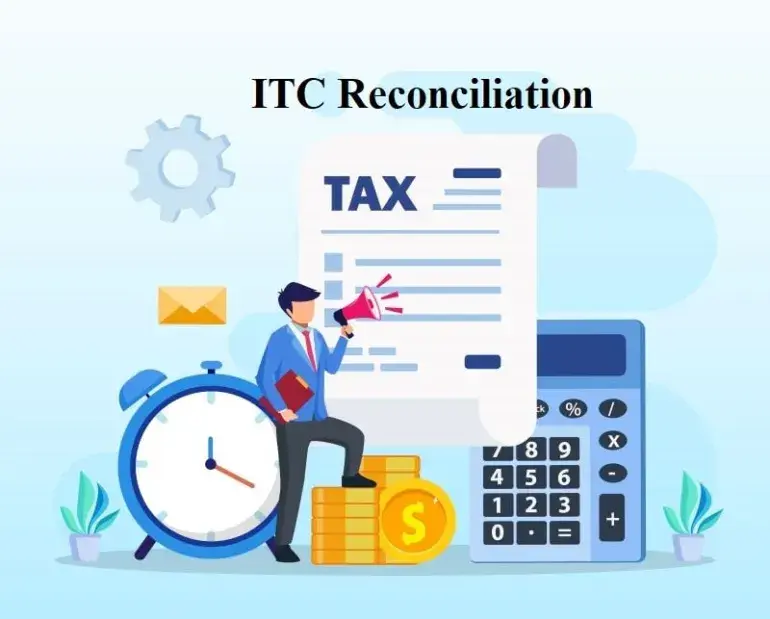Why is Input Tax Credit (ITC) Reconciliation a necessary step for GST filers?

Input Tax Credit (ITC) reconciliation is an essential process for GST filers as it plays a crucial role in maintaining compliance with the law, preventing tax evasion, and ensuring accurate records of transactions. This process involves matching the details of Input Tax Credit claimed in GST returns with the information available in GSTR-2A, which is generated based on the invoices uploaded by suppliers. Here are the reasons why ITC reconciliation is necessary:
1. Avoiding tax theft: ITC reconciliation helps prevent tax evasion by ensuring that taxpayers claim Input Tax Credit only for eligible transactions. By comparing the ITC claimed in the returns with the data available in GSTR-2A, any discrepancies or fraudulent claims can be identified and rectified.
2. Preventing excess tax payments: Reconciling ITC helps businesses identify discrepancies in their returns before filing them. This enables them to rectify errors and ensure they are not paying excess tax, thereby avoiding penalties for non-compliance.
3. Maintaining control on errors: ITC reconciliation reduces the chances of errors in the filing process. By matching the claimed ITC with the data available in GSTR-2A, businesses can identify and rectify any incorrect reporting or mismatches in the details of ITC. This helps in maintaining accurate records, making informed decisions, and avoiding legal issues.
4. Time and resource savings: By conducting ITC reconciliation, businesses save time and effort that would otherwise be spent rectifying errors or dealing with legal issues. By identifying and rectifying discrepancies early on, businesses can streamline their GST filing process and focus on core operations.
Reconciling GST Purchase and Sales Invoices Made Easier with EaseMyGST
To simplify the reconciliation process, the EMG platform offers a Smart Reconciliation feature. This tool facilitates efficient and timely management of reconciliation tasks. It automates the reconciliation process by comparing the invoices uploaded by the taxpayer with the auto-drafted details of GSTR-2A and GSTR-2B. The reconciliation results are then categorized based on next actions required.
The Smart Reconciliation feature takes into account the counterparty GSTIN, invoice number, and financial period (derived from invoice date) as the basic criteria for auto-triggering the reconciliation. The results are categorized into seven categories:
1. Match Category: Invoices that match both the GSTR-2A data and the uploaded data (2P).
2. Deemed Match Category: Invoices within tolerance differences deemed as a match.
3. Invoice Mismatch: Mismatches in invoice-level details such as point of sale (POS), reverse charge, or invoice type.
4. Value Mismatch: Mismatches in values like taxable value or tax amounts.
5. Supplier Only: Additional GSTR-2A invoices for which no comparable invoice is found in the uploaded invoices (2P).
6. Purchaser Only: Additional uploaded invoices (2P) for which no comparable invoice is found in GSTR-2A.
7. Original Supplier Only Amended: Original invoices ignored, and only the amended invoices are considered in reconciliation.
Vendor-wise Input Tax Credit Summary available on EaseMyGST
EaseMyGST also provides a vendor-wise summary for the whole financial year, allowing users to view comparative data between GSTR-2A, GSTR-2B, and uploaded data. The summary includes invoice count, invoice value, taxable value, and tax amount. Additionally, filters based on vendor GSTIN and reconciliation categories can be applied to analyze specific details.
Example Illustrating the Importance and Benefits of ITC Reconciliation:
To illustrate the significance of ITC reconciliation, let's consider a scenario. A business has made purchases worth Rs. 1,00,000 from a registered supplier and paid a GST of Rs. 18,000. As per the eligible ITC, the business can claim Rs. 18,000 in its GST return. However, the supplier has either not uploaded the invoice details in GSTR-1 or has uploaded them with errors. Consequently, the ITC claimed by the business does not match the ITC available as per GSTR-2A.
If the business does not perform ITC reconciliation, it risks paying excess tax or facing penalties for non-compliance. Conversely, by conducting ITC reconciliation, the business can identify the discrepancy and rectify it before filing its GST returns. This helps the business avoid overpayment of taxes, maintain accurate transaction records, and stay compliant with the law.
Failing to rectify such discrepancies may lead the government to initiate investigations and impose penalties for fraudulent ITC claims. Therefore, ITC reconciliation is crucial for ensuring GST compliance and avoiding potential legal issues.
Summary
Input Tax Credit or ITC mismatch is a frequent source of loss for various GST filers and GST payees. It should not be treated as something to be done once in a while, and should not be attempted manually. Advanced GST software from EaseMyGST and the EaseMyGST support team can help with the GST reconciliation. We have had experience in saving our clients lacs of rupees and we could help you as well.





